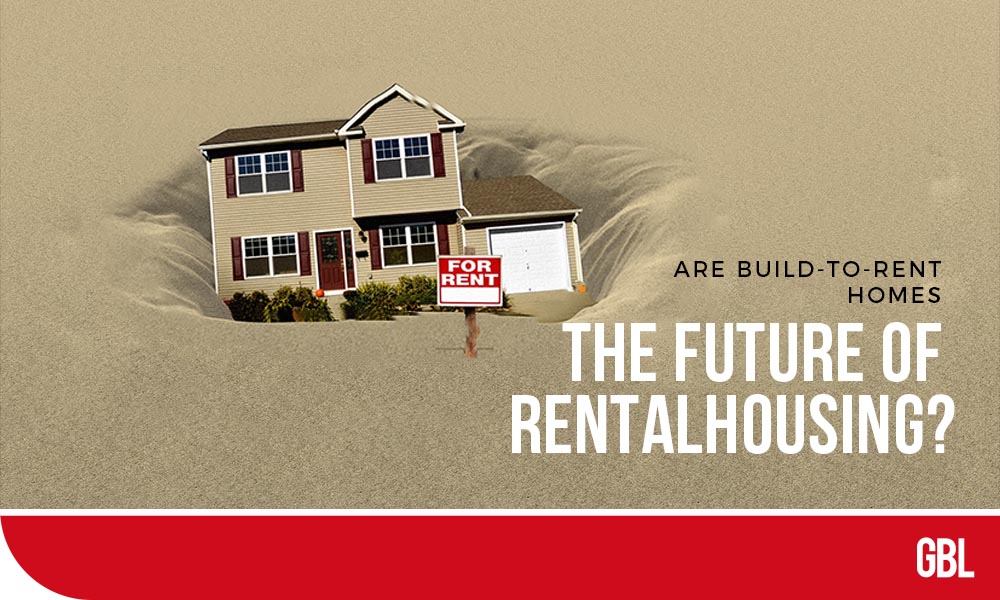Renting has emerged as a popular option over homeownership in several states of America. Large homebuilding companies are moving into the rental market by creating complete neighborhoods of rental homes. BTR homes are one type of rental property specifically designed and built for long-term tenants. BTR homes are becoming highly popular as a more affordable and convenient choice for homeownership.
Build-to-rent communities are attracting major interest and capital investment because homeownership in the United States is currently below 66% and is expected to continue declining over the next 20 years.
What Are Build-to-rent Homes?
Build-to-rent – BTR homes is a popular real estate model where investors buy homes to rent or sell later. These homes are designed for long-term rentals, allowing residents to stay for several years.
Developers create build-to-rent communities by constructing multiple homes in a specific area. These communities offer enhanced services and amenities not typically found in traditional rentals, such as professional management, well-maintained neighborhoods, and attractive landscapes.
Types of Build-to-rent Homes
Build-to-rent homes come in different types based on their sizes, styles, and prices. The most common types include:
- Single-family Homes: These are standalone homes situated on their own lots.
- Duplexes: Build-to-rent duplexes comprise two attached residential units.
- Row Homes: These homes are constructed in a row, sharing a common wall. They are often found in urban or downtown areas.
- Small Lot Homes: These single-family BTR homes are built on relatively smaller lots, typically ranging from 600 to 700 square feet.
Why Are Build-to-rent Homes Growing in Popularity?
There are various reasons for the increasing popularity of BTR homes.
- Millennials are delaying homeownership at a higher rate than previous generations.
- Homeownership costs are rising, making it more difficult for some people to afford a home.
- The rental market is becoming more competitive, with more and more people choosing to rent instead of buy.
How To Choose The Right Build-to-rent Home?
Choosing the right build-to-rent home will depend on individual needs and preferences.
- A single-family home may be the best option if one is looking for a large, spacious home.
- If one is looking for a smaller, more affordable home, a duplex, row home, or small lot home may be a better choice.
No matter what type of build-to-rent home you choose, you can be sure you will get a high-quality, professionally managed home. Build-to-rent homes are designed to provide tenants with a long-term, stable living environment.
Build-to-rent: Pros and Cons
While BTR homes offer several advantages, it’s important to consider the potential drawbacks. Below are the key pros (benefits) and cons (drawbacks) of choosing build-to-rent homes as your housing option.
Benefits of Build-to-rent Homes for Tenants
Some of the benefits of BTR homes for tenants are listed below:
- Long-term leases
- Access to amenities
- Professionally managed
Benefits of Build-to-rent Homes for Investors
Below mentioned are some of the benefits of BTR homes for investors:
- Stable income
- Less volatile than the stock market
- Potential for long-term growth
Potential Drawbacks of Build-to-rent Homes
While build-to-rent (BTR) homes offer several advantages, there are also some potential drawbacks to consider:
- Restrictions on Modifications: Renting a BTR home has limitations on making significant changes to the property. Unlike owning a home or renting a traditional house, tenants may not have the freedom to modify aspects like the backyard according to their preferences.
- Limited Aesthetic Options: BTR homes are designed with modern infrastructure, which may lack older homes’ historic or antique charm. Those seeking a more traditional or vintage aesthetic may find BTR homes less appealing in their architectural style.
- Higher Costs: BTR homes often have luxury facilities and amenities, making them more expensive than other rental options. However, for those willing to invest more in their lifestyle and enjoy enhanced features, BTR homes can be a worthwhile choice.
Potential tenants need to weigh these drawbacks against the benefits offered by BTR homes to make an informed decision that aligns with their preferences and budget.
What Are Build-to-Rent Communities?
Build-to-rent communities are designed to provide a high-quality living experience for long-term tenants while maximizing value for developers and investors.
How To Develop Build-to-Rent Communities?
The development process for BTR communities mainly involves the following steps:
Step 1: Site Selection
One has to select a suitable site for developing a build-to-rent community. The developer will consider factors like the location, the size of the site, and the zoning requirements. They will also conduct a market analysis to understand the demand for rental housing in the area.
Step 2: Land Acquisition
Once a site has been selected, the developer will need to acquire the land. They may purchase the land outright or partner with the landowner. In either case, the developer must negotiate a fair purchase price for both parties.
Step 3: Financing
The cost of developing a build-to-rent community can be significant. The developer will need to secure financing to cover the costs of land acquisition, construction, and marketing. Various financing options are available, including loans from banks, government agencies, and private investors.
Step 4: Construction
Once financing has been secured, the developer can begin construction on the build-to-rent community. The construction process will typically take several months to complete.
Step 5: Marketing
Once the build-to-rent community is complete, the developer must market it to potential tenants. They may use a variety of marketing channels, including online advertising, print advertising, and word-of-mouth.
Step 6: Leasing
Once tenants have been found, the developer will need to lease the homes to them. The lease agreement will typically specify the rent amount, the term of the lease, and the tenant’s rights and responsibilities.
Step 7: Property Management
Once the homes are leased, the developer must manage the property. It includes tasks such as collecting rent, handling maintenance requests, and responding to tenant complaints. The developer may choose to manage the property themselves or hire a professional property management company.
Benefits of Build-to-Rent Communities
Build-to-rent (BTR) communities offer several benefits for both tenants and developers. BTR communities offer tenants a more stable and predictable living environment than the traditional rental market. They also tend to be located in desirable areas and offer amenities that are not typically found in single-family homes, such as pools, fitness centers, and playgrounds.
For investors, BTR communities offer many attractive features. They are typically leased for a longer duration, providing developers with a more stable income stream. They are also less volatile than the stock market, making them a good option for developers seeking long-term growth.
Conclusion
As the demand for build-to-rent homes grows, more homebuilding companies will likely enter this market. It could help to address the growing shortage of affordable housing in the United States.









